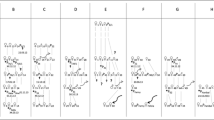Summary
Spacing and kinship of the Formosan squirrel, Callosciurus erythraeus thaiwanensis, were studied in two different habitats. One, native habitat in the woods of Kenting, southern Formosa, was rich in available food throughout the year and had several species of predators. The other, a site in Kamakura, central Japan where squirrels had been introduced, had relatively scanty food and few potential predators. 1. Home ranges among males and between sexes overlapped extensively in both habitats. 2. Females occupied exclusive home ranges in Kamakura but had small overlapping home ranges in Ken-ting. 3. Most males disappeared from their natal areas at 1 year old in both habitats (86% in Kamakura and 93% in Ken-ting), but less females disappeared (36% in Kamakura and 35% in Ken-ting). 4. In Kamakura, daughters settled adjacent to the mother or inherited the home range of the mother, but never shared the mother's home range. In Ken-ting, 35% of daughters shared the home range with their mothers. 5. Tolerance among female kin in Ken-ting was probably facilitated by the richness of available food throughout the year, and functioned to reduce predation risk via alarm calling and mobbing.
Similar content being viewed by others
References
Armitage KB (1981) Sociality as a life-history tactic of ground squirrels. Oecologia 48:36–49
Balph DF (1984) Spacial and social behavior in a population of Uinta ground squirrels. In: Murie JO, Michener GR (eds) The biology of ground-dwelling squirrels. University of Nebraska Press, pp 336–352
Barash DP (1973) Social variety in the yellow-bellied marmot (Marmota flaviventris). Anim Behav 21:579–584
Barash DP (1974) The social behaviour of the Hoary marmot (Marmota caligata). Anim Behav 22:256–261
Benson BN (1980) Dominance relationships, mating behaviour and scent marking in fox squirrels (Sciurus niger). Mammalia 44:143–160
Dobson FS, Kjelgaard JD (1985) The influence of food resources on life history in Columbia ground squirrels. Can J Zool 63:2105–2109
Dunford C (1977) Social system of round-tailed ground squirrels. Anim Behav 25:885–906
Farentinos RC (1972) Social dominance and mating activity in the tassel-eared squirrel, (Sciurus aberti ferreus). Anim Behav 20:316–326
Farentinos RC (1980) Sexual solicitation of subordinate males by female tassel-eared squirrels (Sciurus aberti). J Mamm 61:337–341
Festa-Bianchet M (1981) Reproduction in yearling female Columbian ground squirrels (Spermophilus columbianus). Can J Zool 59:1032–1035
Festa-Bianchet M, Boag DA (1982) Territoriality in adult female Columbian ground squirrels. Can J Zool 60:1060–1066
Heaney LR (1984) Climatic influences on life-history tactics and behavior of North American tree squirrels. In: Murie JO Michener GR (eds) The biology of ground-dwelling squirrels. University of Nebraska Press, pp 43–78
Holekamp KE (1984) Dispersal in ground-dwelling Sciurids. ibid. pp 297–320
King WJ, Murie JO (1985) Temporal overlap of female kin in Columbian ground squirrels (Spermophilus columbianus). Behav Ecol Sociobiol 16:337–341
Koford RR (1982) Mating system of a territorial tree squirrel (Tamiasciurus douglasii) in California. J Mamm 63:274–283
Layne JN (1954) The biology of the red squirrel, Tamiasciurus hudsonicus loquax, in central New York. Ecol Monogr 24:227–267
Lott DF (1984) Intraspecific variation in the social systems of wild vertebrates. Behaviour 18:266–325
McLean IG (1982) The association of female kin in the arctic ground squirrel, Spermophilus parryii. Behav Ecol Sociobiol 10:91–99
Michener GR (1979) Spatial relationships and social organization of adult Richardson's ground squirrels. Can J Zool 57:125–139
Michener GR (1983) Kin identification, matriarchies, and the evolution of sociality in ground-dwelling sciurids. In: Eisenberg JF, Kleiman DG (eds) Advances in the study of mammalian behavior. Am Soc Mammal Spec Publ No. 7 pp 528–572
Michener GR, Murie JO (1983) Black-tailed prairie dog coteries: are they cooperatively breeding unit? Amer Nat 121:266–274
Ostfeld RS (1985) Limiting resources and territoriality in microtine rodents. Am Nat 126:1–15
Rayor LS (1985) Effects of habitat quality on growth, age of first reproduction, and dispersal in Gunnison's prairie dogs (Cynomys gunnisoni). Can J Zool 63:2835–2840
Sherman PW (1977) Nepotism and the evolution of alarm calls. Science 197:1246–1253
Sherman PW (1981) Kinship, demography, and Belding's ground squirrel nepotism. Behav Ecol Sociobiol 8:251–259
Slade NA, Balph DF (1974) Population ecology of Uinta ground squirrels. Ecology 55:989–1003
Smith CC (1968) The adaptive nature of social organization in the genus Tamiasciurus. Ecol Monogr 38:31–63
Tamura N, Hayashi F, Miyashita K (1988) Dominance hierarchy and mating behavior of the Formosan squirrel, Callosciurus erythraeus thaiwanensis. J Mamm 69:320–331
Tamura N (1989) Snake-directed mobbing by the Formosan squirrel Callosciurus erythraeus thaiwanensis. Behav Ecol Sociobiol 24 (in press)
Thompson DC (1977) Reproductive behaviour of the grey squirrel. Can J Zool 55:1176–1184
Vestal BM, McCarley H (1984) Spatial and social relations of kin in thirteen-lined and other ground squirrels. In: Murie JO, Michener GR (eds) The biology of ground-dwelling squirrels. University of Nebraska Press, pp 404–423
Wilkinson GS, Baker AEM (1988) Communal nesting among genetically similar house mice. Ethology 77:103–114
Wolff JO (1985) Matternal aggression as a deterrent to infanticide in Peromyscus leucopus and P. maniculatus. Anim Behav 33:117–123
Author information
Authors and Affiliations
Rights and permissions
About this article
Cite this article
Tamura, N., Hayashi, F. & Miyashita, K. Spacing and kinship in the Formosan squirrel living in different habitats. Oecologia 79, 344–352 (1989). https://doi.org/10.1007/BF00384313
Received:
Published:
Issue Date:
DOI: https://doi.org/10.1007/BF00384313




